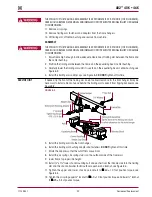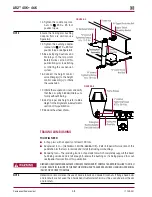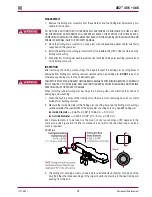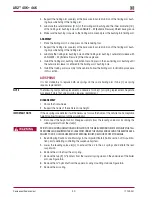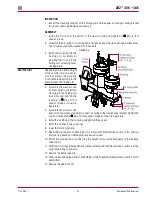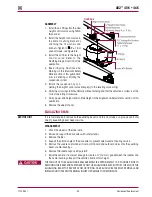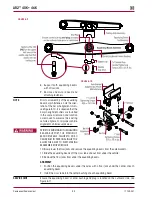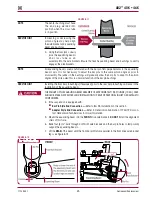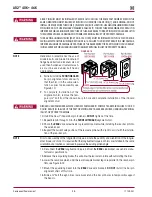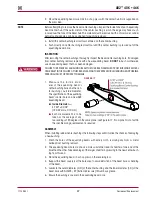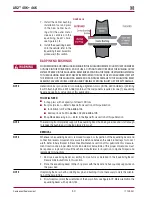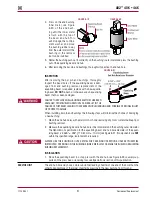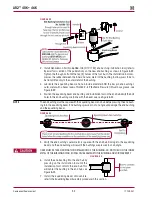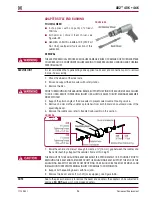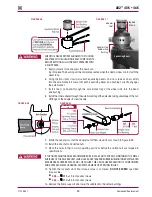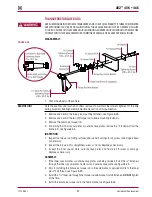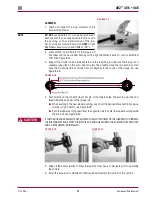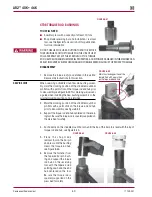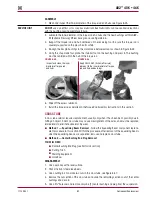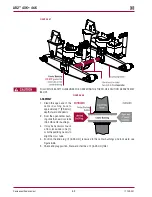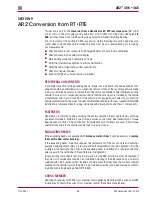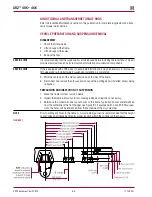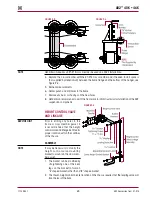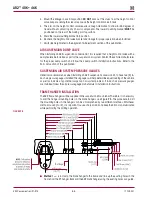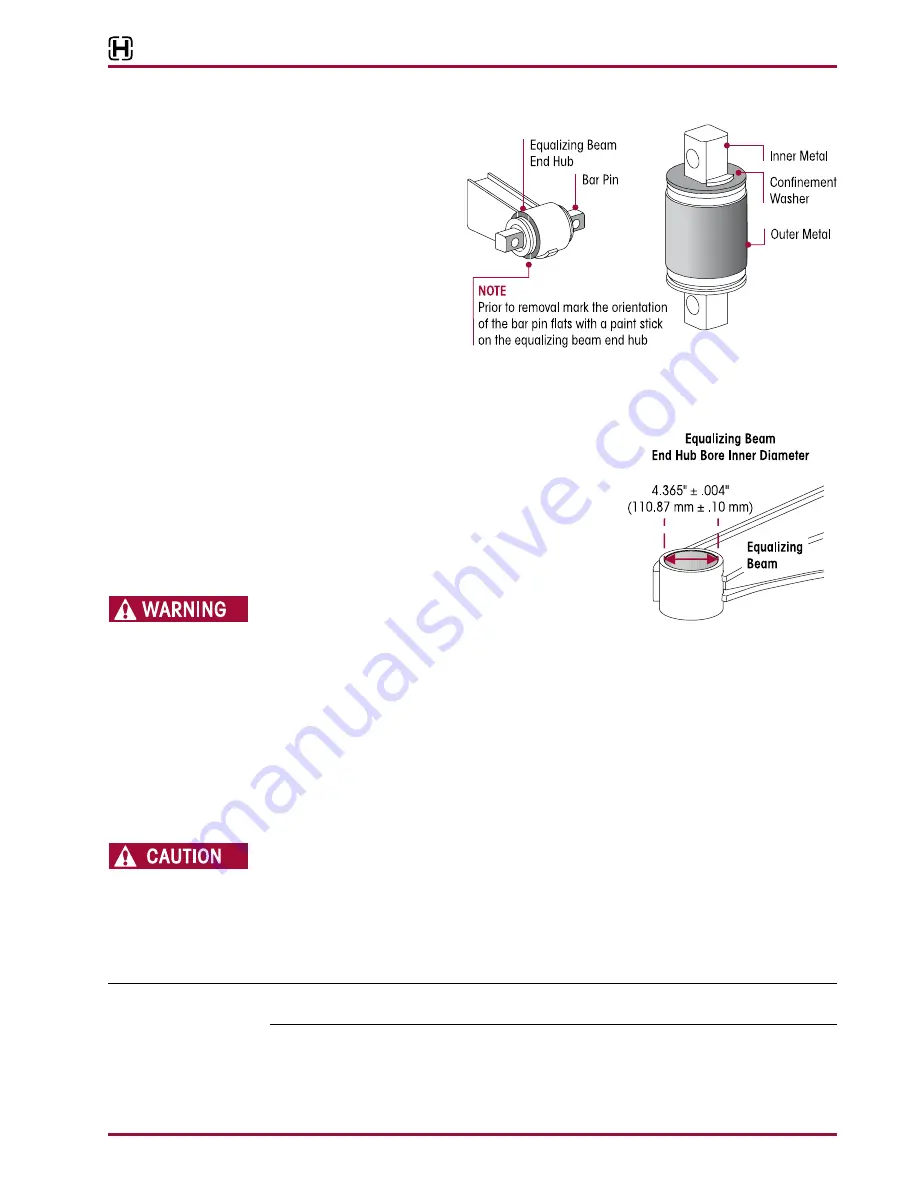
17730-241
51
Component Replacement
AR2
™
40K • 46K
FIguRE 8‑19
FIguRE 8‑20
4 . Press on the end bushing
inner metal, see Figure
8-20, of the end bush-
ing until the inner metal
is flush with the top of
the beam end hub . This
will dislodge the confine-
ment washer and move
the bushing rubber away
from the outer metal of the
bushing so the removal
tool can be installed .
5 . Center the bushing push out tool directly on the bushing’s outer metal and press the bushing
out of the equalizing beam end hub .
6 . After removing the bar pin end bushings, thoroughly inspect each end hub bore .
FIguRE 8‑21
INSpECTION
After removing the bar pin end bushings, thoroughly
inspect the beam bores . If the equalizing beam is dam-
aged from end bushing removal, replacement of the
equalizing beam is required, replace with a new equaliz-
ing beam .
dO NOT
re-bush or otherwise use an equalizing
beam that has been damaged .
FAILURE TO REPLACE AN EQUALIZING BEAM THAT HAS BEEN
DAMAGED FROM BUSHING REMOVAL CAN RESULT IN THE
FAILURE OF THAT BEAM, LEADING TO ADVERSE VEHICLE HANDLING AND POSSIBLE PERSONAL INjURY
OR PROPERTY DAMAGE .
When installing bar pin end bushings the following steps will minimize the chance of damaging
a new bushing:
1 . Clean the end hub bores with emery cloth or hone, removing any nicks or metal buildup from
bushing removal .
2 . Measure the equalizing beam end hub bore inner diameter and the bushing outer diameter .
The Hendrickson specification for the equalizing beam end hub bore diameter of the equal-
izing beam is 4 .365" ± .004", (110 .87 mm ± .10 mm) see Figure 8-21 . If components are
NOT
within the specified range, replacement is required .
ALWAYS USE THE BUSHING’S OUTER METAL FOR PRESSING OPERATIONS, UNLESS OTHERWISE
INSTRUCTED . PRESSING ON THE BUSHINGS INNER METAL MAY DAMAGE THE BUSHING REQUIRING
BUSHING REPLACEMENT .
INSTALLATION
1 . Place the equalizing beam in a shop press with the end hub, see Figure 8-22, squarely sup-
ported on the press bed or receiving tool, see Special Tools section of this publication .
SERVICE HINT
The end hub bore may have a more substantial leading chamfer at one end of the bore than the
other . Take advantage of the larger chamfer by pressing in the new bushing from this end .

